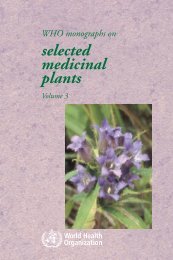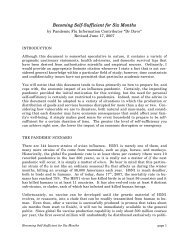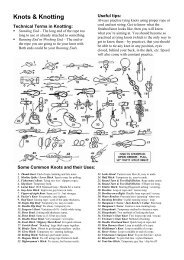You also want an ePaper? Increase the reach of your titles
YUMPU automatically turns print PDFs into web optimized ePapers that Google loves.
White Spore Print<br />
GENUS Amanita<br />
Those who eat mushrooms are again warned that to learn the<br />
common poisonous species and avoid them and to eat all others is<br />
risking serious illness or death! The edibility of all species is not<br />
known. The only safe procedure is to learn thoroughly a few of<br />
the common edible ones and to avoid all others. The purpose of including<br />
some of the more common poisonous kinds in this book<br />
is to show how these resemble, and how they can be distinguished<br />
from, the common edible kinds.<br />
The genus Amanita, named for Amanos, a mountain in Asia<br />
Minor, contains the more common deadly species of mushrooms.<br />
These may be identified by the following characteristics. Learn<br />
them well!<br />
1. White spores.<br />
2. Gills that are free from the stem; that is, they extend almost<br />
to the stem but do not touch it.<br />
3. A ring around the upper part of the stem. In newly expanded<br />
specimens this is always visible and usually prominent,<br />
but it often collapses, withers, and disappears in older specimens.<br />
The stem should be examined very closely for evidence of it.<br />
4. A cup, or volva, surrounding the base of the stem. In some<br />
species this is beneath the surface of the ground or buried in leaf<br />
litter or grass and thus will be missed unless one carefully digs up<br />
the entire stem. Moreover, this cup also withers and almost disappears<br />
with age.<br />
To make identification even more difficult, the volva, instead<br />
of being always a definite cup-like structure enclosing the base of<br />
the stem, is sometimes merely a series of partial and inconspicuous<br />
rings on the swollen base of the stem, permitting confusion with<br />
the genus Lepiota and even with young specimens of Agaricus.<br />
The prominent and movable ring on the stem of Lepiota procera<br />
2 7
















